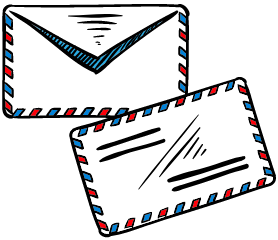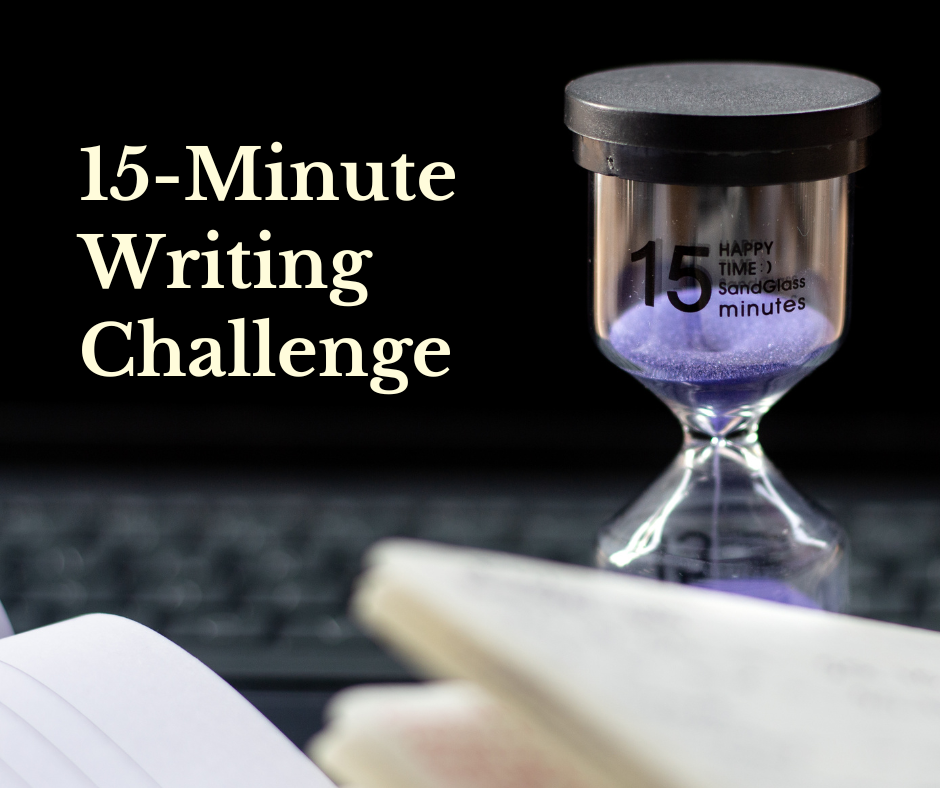One of the strengths of ADHD and other types of neurodivergence is ‘divergent thinking’: the ability to see connections that others don’t see.
As a neurodivergent academic, this can be a real benefit for generating original contributions to knowledge.
However, it can also be a curse.
The expectations of the academic publishing environment (and indeed a lot of readers) is some kind of roughly linear structure with a clear central point. Your brain may not work like that.
Truly, ADHD is a rich tapestry. Sometimes. And other times it’s a random assortment of threads that I planned to make into something and forgot about and now it’s sitting in a corner collecting dust, so I start unraveling it, but then I get distracted by something else.
—@girlwhowhirls.bsky.social, 14 January 2025
If you receive any of these comments on your writing, this post might help:
- The argument isn’t clear
- I’m not sure how this section connects with the rest of it
- I’ve lost the thread of your argument
- I don’t know what you are trying to say?
You don’t have to be someone else!
If you’ve tried a process that someone else suggested and you find it frustrating or difficult to use, you don’t have to use it. It might work well for that other person. It might work well for many other people. If it doesn’t work for you, you need to find the thing that will.
If your brain does not naturally organize things in a linear form, and the central point you want to make is usually lost in a big tangle of threads, then that’s where you need to start.
As a practitioner of several fibre crafts, I have some skill in untangling literal threads/yarn. The key to doing so is to
- loosen the tangles,
- observe closely,
- focus on one strand at a time, and
- go slowly.
You can do the same with your writing.
I’m going to use an extended textile crafts metaphor to help you figure out how you might approach your writing.
Yes, the published version will need a clear central point. Those threads will need to be untangled and organized in a way that other people can follow.
The first draft does not!
The things other people do to start a project might be things you do part-way through, as a way to narrow your focus and guide the next phases.
In fact, for you, it might not even be helpful to think of the early stages of a writing project as a first draft of a specific output.
Starting without knowing how it ends…
There’s more than one way to knit a sweater or make a quilt. While it’s common to start with a pattern, or at least a picture of what you want the final version to look like, you don’t have to.
Sometimes the process is messier, at least to begin with.
When I’m starting a new knitting or quilting project, I sometimes start by going to my stash and pulling out a bunch of yarn or fabric and just laying it out on a table. Or I go to the shop (or a festival) and look at what’s on offer.
- What attracts my attention?
- How could I combine things?
- Are there different ways to combine them?
- What proportions would be pleasing?
- What if I add complexity?
- What if I made it simpler?
That process can take a while. Sometimes I have to play with options. Arrange things physically. Step back to get a different perspective.
I might also look at patterns to get a sense of what might be possible. Maybe one jumps out as a good fit for some of what I have. Maybe one or two have elements I definitely want to include, even if they aren’t quite right.
Sometimes I need to leave things be so my brain can work on the puzzle in the background. The process can be iterative. It helps that I have a space where I can leave the mess out where I can see it easily.
This early phase may not be prose
The equivalent of yarn or fabric is your source material or data. You might get something like a knitting pattern from the secondary literature: a theoretical or conceptual framework, a study someone else did, or something similar.
You might use mind maps or other non-linear ways of organizing the information. It might be helpful to do using post-it notes on a wall so you can rearrange things as you discern patterns.
You might organize your sources or data intuitively at first, allowing yourself to be drawn to particular elements or patterns. You might try organizing it systematically.
You might produce tables, charts or diagrams. An engineer who took a workshop with me once told me that they started writing articles by producing the figures and then talking through the figures with their co-author.
If you have qualitative data, you might write interview summaries, create vignettes, or write stories about each participant.
You will need to leave it sometimes so your brain can work on the puzzle in the background. Your process will be iterative and move between these different ways of organizing the building blocks of your writing.
It often looks like not much is happening. It’s messy. This phase can be really frustrating. You may doubt that you even know how to knit write, or that there is anything pleasing or useful that you can make with this pile of stuff.
You can only do so much in your head
The goal of this early phase is to make a few decisions that narrow down the scope of the project to something manageable. You may still not know what the final product looks like, but you know some elements you definitely want to include and a bunch of things that are probably not useful. You can make it a smaller, more organized, mess.
At this point, you probably have to actually do some work to figure out where to go next. You can’t always tell what will work or how the end product will look without doing quite a lot of work.
You might have to commit to buying yarn or fabric that you will not be able to return. It won’t be wasted. If it doesn’t end up in this project, it’ll be part of that messy first stage of some other project.
The reason you can’t return the yarn or fabric is because you are going to do work that transforms it. You’ll knit a swatch. Or cut your fabric into pieces and sew some sample patches.
You might sketch things out first, and even colour them in with appropriate pencils (to save your fabric) but that’s still work. It takes time and cognitive effort.
Knitting a swatch tells you whether this fabric knit with this size of needles looks and feels how you want it to. It also tells you whether the pattern you want works. A complex stitch pattern may not show up the way you thought it would, for example.
The scenario you are hoping for is that you do this work and confirm that the plan that is forming is feasible. You can use this yarn! That stitch pattern will look great! Those are definitely the right size needles!
Chances are, you are going to have to change something. Maybe knit swatches with different size needles until you find the fabric you like. Or audition a few different colour combinations to find the one that really sings.
The worst case scenario is likely that you will need to go back to the earlier phase and consider different options. Maybe buy a different yarn. Or look at different patterns. You might be so frustrated you put the whole thing in time out for a while and go work on a completely different project.
Pick a good option and write a first draft
Get things down on paper where you can really see how this particular option might work out in practice. It might not work out how you hoped! But you will learn something about what might work instead.
The goal here is to build your confidence in the argument you want to make. It’s nowhere near ready for readers, much less readers you don’t know and trust.
- Take those core elements and make the argument.
- Do the analysis you need to do to support it.
This work really helps you refine the argument and see the nuance. It’s going to show the limitations of your data and the problems with the conceptual and theoretical framing.
The best case scenario is that the more you work on it the more confident you are. You get excited about this argument. You are eager to go back to the project and develop the nuances.
The worst case scenario is that you discover this just isn’t going to work. The conceptual framework breaks. Or the evidence just isn’t there for the argument you want to make.
In many cases, it’ll be something in between. You can make a slightly less ambitious argument with the evidence you have. Or, it’s clear what evidence you need to collect to make the more ambitious argument and you can get it. Or, you need to do some more reading to figure out the conceptual puzzle and you know exactly where to go.
Sometimes, you just don’t have the skills and knowledge you need to do this right now. The whole project has to go into time out, and you need to turn your attention to a different project. You may be surprised what you are able to do with it when you unearth it again in 5 years.
A good first draft will still be missing elements
I frequently start projects without knowing what the finished item will look like. Hell, I started writing this post that way!
I’ve knit the body of a sweater before deciding what the border and cuffs would look like. I’ve made enough patchwork blocks for a whole quilt, and only then taken them to the quilt shop to buy fabric for sashing and borders. I even partially ripped out a sweater, put the live stitches back on the needles and knit a different shape for part of the body.
A good first draft of your writing project is one that makes you confident that you do have a contribution to make based on the research you have done. There is an argument here and you can support that argument with evidence.
If you know that you have a tendency to be distracted by side quests, or change the whole thrust of the paper when you revise, that’s probably because your neurodivergent brain likes novelty.
Some of my clients find it helpful to work in bullet points for quite a long time so that it doesn’t feel “finished”, thus reducing the temptation to do this. You might have to experiment with strategies for leaving enough novelty so you don’t get bored before you have a good draft.
Your brain is amazing. Frustrating sometimes, but amazing. You don’t have to add the frustration of trying to make it work like someone else’s brain. Experiment. Allow your process to be messy, especially in the beginning. You can do this!
Related Posts:
Thoughts on “Untangling Academic Publishing”
A strategy to overcome resistance to write
Are you tempted to binge write for the last few weeks of the break?
Motivation and accomplishment in your writing practice
This post was originally sent to the General Newsletter on 13 February 2025.







